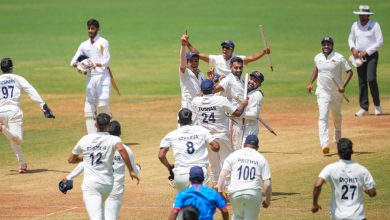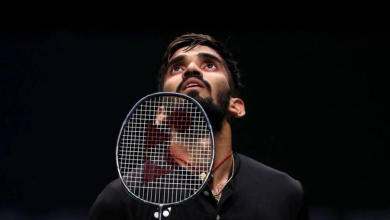Tricky course may present an opportunity to locals as Indian Open returns to Gurugram

When answering a question from a fan on Twitter back in 2018, former World No. 33 Eddie Pepperell said the course at the DLF Golf and Country Club in Gurugram was “designed Satan”.
After a four-year-long COVID-induced break, India’s national golf championship – the $2 million Hero Indian Open – returns to that course on Thursday. Ever since it debuted on the DP World (formerly ‘European’) Tour in 2017, the course has been the major talking point of the event.
You’re right Ian I didn’t enter as never planned to play them. Tshwane out of protest for not getting in last year (🤣) and India because, well, that course was designed Satan. https://t.co/JSb1Nf2VeG
— Eddie Pepperell (@PepperellEddie) March 1, 2018
Even some of the more seasoned pros have struggled in Gurugram in the past: the big man-made lakes require tight driving, the foam-facing bunkering needs an excellent wedge game, and the fast greens and tricky rough do not usually allow low scores.
Courses as challenging as this usually make top golfers look a bit clueless – and there is a point to be made whether that is self-defeating for the sport in the first place.
Nevertheless, those that have made their way back to the venue this year know full well that the challenging nature of the course – in particular the final three holes – can cause some unpredictable results. Denmark’s Thorbjørn Olesen, fresh off his win at the Thailand Classic last week, is wary of letting his form make him complacent.
“I think all the guys have said a lot about the golf course and what you need to do and it’s going to be a different week,” he told media on Tuesday. “The 16th, 17th and 18th, which is like an uphill climb and has the waterfall – I haven’t played it yet.”
Scotland’s Robert MacIntyre, who joins his countryman and defending champion (2019) Scott Gallacher in the field, aced the 16th hole in practice, but explained just how challenging the back three might be.
“I’ve heard a lot of stories about how difficult and almost wild it is. I played the back nine today and stood on the 15th and thought: ‘This is alright here, we can deal with this’, and then the last three and a half holes blew my mind a little bit,” he said. “It’s a mental test rather than a test of your golf game.”Home comfort
This may just present an opportunity to a strong Indian contingent in Gurugram this week, many of whom playing on the Professional Golf Tour of India (PGTI) being well-versed with the course.
Anirban Lahiri, champion in 2015 who has joined LIV Golf – the Saudi-backed upstart league that has disrupted the sport’s status quo, and remains one of the big talking points this week in Gurugram – chose to skip the event. But veteran SSP Chawrasia – who won the second of his two Indian Open titles (2016, 2017) at the DLF Club – will be in the field.
The 26-year-old talent Manu Gandas, the PGTI’s Order of Merit topper thanks to which he now has a full card for the DP World Tour, will also play, and so will Arjuna Awardee Shubhankar Sharma.
Sharma, who became the youngest Indian to win a European Tour title five years ago, believes the course he has played on since childhood is now a lot more playable, and has matured since 2019.
“It’s a tough course, one of the more challenging ones on the whole tour,” he told reporters on Wednesday. “All the players are talking about the last three holes because they are very hard finishing holes. Especially knowing where the wind is coming from, if it picks up. But that’s what makes it exciting, because it is not over until the final hole here.”Also Read
“Some of the Indians have played more regularly here, so that will help them and serve them well,” he said. “But I expect the top pros who have been in good touch, to be in and around the leaderboard. They will know how to adapt quickly.”







